Electric Cars or Electric are the future in the automobile industry. We will learn the basic details of electric cars, it’s type, advantages, disadvantages, applications, etc.
Electric Cars or Electric Vehicles Basics
Introduction
Let’s understand the basic introduction of electric cars or vehicles. The world is moving towards consuming lesser fuel and reducing pollution. We already know that cars or any vehicles are driven by fossil fuels, like oil or gas and each vehicle produces pollutants that are dangerous for our nature.
- As the number of cars is huge in the world, pollutions are also becoming huge and it is increasing day by day.
- More pollution incurs health hazards, global warming, and many more.
Hence, to save our planet, to save our nation, to save our entity, the medium is required to change from fossil fuel to electricity and the concept of electric cars or electric vehicles comes into the picture.
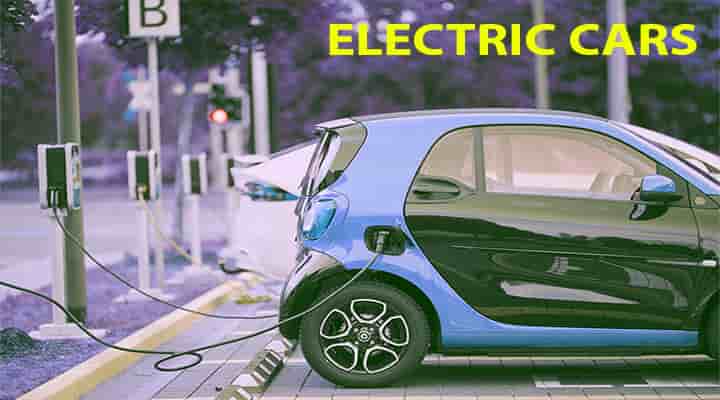
Now, electric cars are making their way into commercial markets in developed countries and it is also expected to come to developing countries soon.
History
As electric cars don’t use any fossil fuel like oil or gas, pollution will not be encountered like petrol cars or diesel cars, or gas-driven cars.
- Though you might think of the concept as new it dates back to 1837. The first electric car was built in Aberdeen, Scotland.
- They were even introduced in the 19th century. But the popularity back in the days didn’t last due to decreasing prices of petrol and diesel.
- But from the last few decades, the environmental impacts and depleting natural oil fuel sources started the interest in electric vehicles.
What are Electric Cars/Vehicles?
Electric cars or vehicles (EVs) run on electricity. We have already learned that electricity can be produced from various sources like Nuclear and also renewable sources like,
- Tidal,
- solar,
- hydropower, and
- wind power.
Electric vehicles seem to be the future of automobiles along with self-driving cars.
Let’s dive a bit into the details of Electric vehicles (EVs).
Electric Car Definition
In simple words, electric vehicles are those that use the electrical power stored in the battery rather than the internal combustion engines.
- There are a variety of electric vehicles available right now in the market.
- To give the answers to rising pollution, fuel depletion the electric vehicle was introduced a long way back.
- But no one was interested in these vehicles because of the low prices of fossil fuels.
- But now with the increasing carbon footprints, the electric vehicle may be the future of automobiles.
- The working of the electric vehicle somewhat differs according to its types.
- Mostly, all-electric vehicles that are operated on the battery are getting attention.
- While the hybrid electric vehicle that runs on internal combustion engines (ICE) as well as electric motors. We will see each type one by one later on.
The components of the EVs are the same as normal vehicles only the energy used to propel the vehicle is electric energy.
Let’s know more about the components of electric vehicles.
XPH is your home for BMW, Audi, Ford Mustang, VW, Porsche and Nissan GTR aftermarket parts.
Components of Electric Vehicles
Apart from the propelling power components used in the EVs all the other components are the same as other normal ICE-based vehicles. These are,
- Electric motor
- Reducer
- Battery pack
- Power Inverter
- Battery management & heating system
- Controller
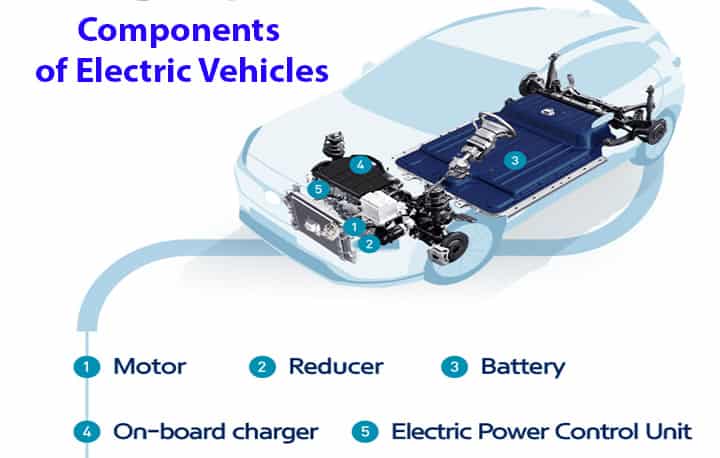
Electric Motor
The electric motor is responsible for converting electrical energy into mechanical energy. The mechanical energy converted, you can call it rotational power or kinetic energy to wheels. There are various advantages of using the electric motor instead of ICE.
- Firstly, the noise is reduced to a lot of extents and the vibrations are minimized.
- If you drove the electric vehicle you would be surprised to experience so much quiet operation in the vehicle.
- Even the size of electric motors is less compared to the IC engine arrangements.
So, the designers get the freedom to design the car with more space and comfortability. Mostly the brushless type DC motors are used in electric vehicles.
Some hybrid electric cars have the generator-motor type which performs propulsion as well as regeneration.
Reducer
The reducer as the name suggests controls the rotation per minute (RPM) of the electric motor.
- It serves the job of effective transmission of power from the motor to the wheels.
- Basically, the motor has a high RPM speed which is far much higher than that of IC engines. So, the RPM needs to adjust according to the speed, right? This is where the reducer job kicks in.
The reducer’s job is to reduce the motor RPM to a required level so that the EVs can get the advantage of higher torque.
Spring is here! Save big on our best-selling WAGNER TUNING BMW F CHASSIS N55 CATTED DOWNPIPE
Electrical Vehicle Battery Pack
The function of the battery in the electric vehicle is the same as that of the battery in all of our devices.
- The battery stores the electrical energy in the form of direct current (DC).
- Most of the electric vehicles are equipped with Lithium-Ion batteries, they have higher density and longer lifespan.
- You can determine the vehicle mileage by the battery capacity.
- The more battery capacity more will be the mileage from the vehicle.
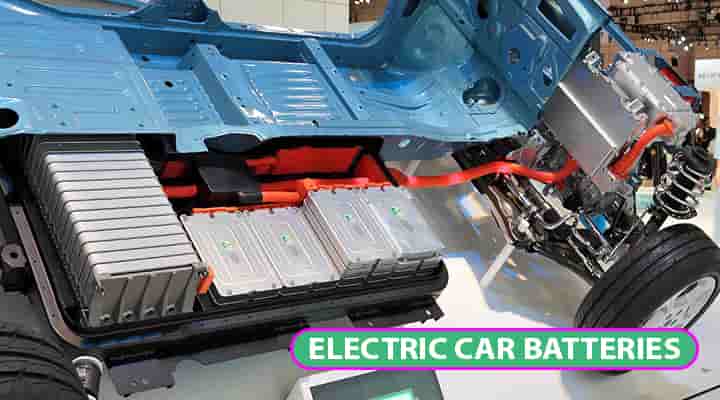
But there is one complexity in case of batteries. If you employ the larger capacity battery the space available will be much less due to the size of the battery. If the solution is looked out for this problem, the batteries with higher density should be used which are small and lightweight.
As the prices of Lithium-Ion batteries are decreasing the electric vehicles are getting affordable. If we take a look at the battery life, it depends on various factors.
- It depends on how you charge it, let’s suppose an EV runs 200kms on the battery with 100-0% charge.
- If we recharge it after it gets fully exhausted it can stand up to 1000 recharges.
- But if we recharge it on 50% it can last up to 2000 recharges.
Power Inverter
The inverter has the role of converting the direct current to an alternating current. Later this current is used by an electric motor.
- In most cars, the bi-directional inverter is used.
- Rather than converting DC to AC, it can convert AC current to DC current while recharging the battery.
Battery Management and Heating System
The electric vehicle battery consists of tens of thousands of cells. They have to operate as a single entity this is where the battery management system becomes useful.
- Each cell of the battery has to be in the same condition as others to work efficiently.
- The BMS is incorporated in the Electric Power Control Unit (EPCU).
- If in any possible way the cells malfunction, the BMS will automatically adjust the status as ON/OFF with the use of a relay mechanism.
The battery works best in optimal temperatures. It gets affected in lower temperatures; the charging speed of the battery will become slow in a lower temperature environment.
The battery heater is used to avoid this problem. It maintains the ideal temperatures of the battery regardless of the outside temperatures.
Controller
The controller is known as the electric power control unit. It controls the overall flow of electric current throughout the vehicle.
The battery produces DC current i.e., direct current, and the controller transforms this DC current into AC current and helps to regulate the flow of energy from the battery to the vehicles.
Unlike the carburetor used in IC engines, the controller will also,
- Reverse the motor rotation (so the vehicle can go in reverse), and
- Convert the motor to a generator (so that the kinetic energy of motion can be used to recharge the battery when the brake is applied).
If we summarise the role of the controller, as follows:
- It manages the flow of electric energy in the vehicle.
- It controls the current/energy from the battery,
- It controls the speed of the electric motor.
In short, this component decides how the Electric vehicle will work. Also, the EPCU consists of the vehicle control unit. It looks out every mechanism and control in the electric vehicle.
So these are the basic components of an electric vehicle, now let’s know how does the electric car work?.
How Does an Electric Car Work?
The working of an electric car is plain and simple easy to understand. We know already that electric vehicles have onboard charged batteries. The battery is charged first, then the battery transfers the current/energy to the electric motor.
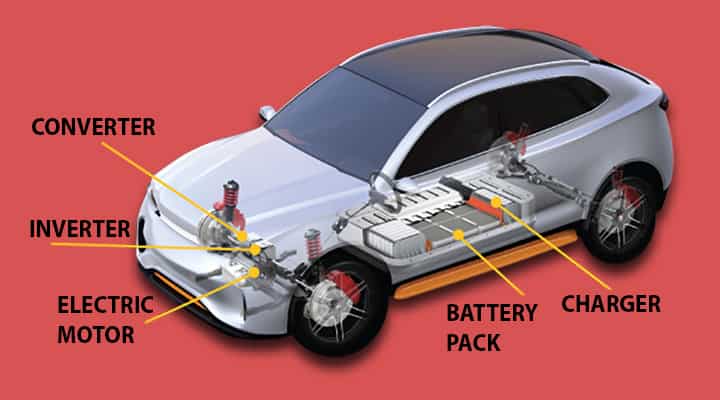
Where the reducer reduced the RPM of the electric motor to work as per requirement. The power is then transferred to the wheels. If you want to understand it better here is the pointwise working principle,
- Firstly, the controller regulates the electric energy coming from batteries. The controller forwards the current as much as the driver steps on the peddle.
- The inverter as discussed in the components section converts the current from DC to AC.
- This current is then passed to the electric motor.
- The electric motor converts the electrical energy into mechanical rotational energy.
- This results from the wheels’ rotations and the vehicle will propel.
Types of Electric vehicles
There are various types of electric vehicles. They are differentiated on the basis of how electric power is used.
Let’s check them out one by one.
Pure electric vehicles
These are based on electric energy only. They have the energy stored in the battery just like we discussed in the above sections. They are also known as battery electric vehicles. These are the ones that might come into your mind while thinking about electric vehicles.
Lots of major electric car companies like,
- Tesla,
- Kandi Technologies Group Inc,
- Tata, recently planning,
- NIO,
- Renault offers these kinds of vehicles.
These vehicles can almost 200-400kms on a single charge.
Hybrid Electric Vehicles
Hybrid electric vehicles are one of those which are powered by petrol as well as electricity.
- Regenerative braking is used as power to recharge the battery. Regenerative braking is the process of generating power when the electric motor helps to stop the vehicle and the heat energy used can be converted to recharge the battery.
- At the start the HEVs start with a battery-operated electric motor, then the IC engine kicks in when the load rises.
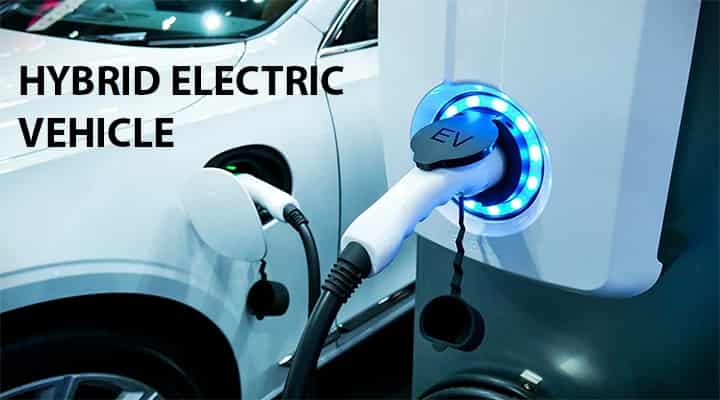
The examples of HEVs are,
- Honda Civic Hybrid and
- Toyota Camry.
Plug-in Hybrid Electric Vehicles
These vehicles combine electric energy as well as fuel energy. These are the most selling vehicles from the last decade. Japan is the main spot of these vehicles selling almost 5 million hybrid EVs.
- These vehicles can be charged by plugging into the power supply.
- It can run on battery for short time.
- You can use the electric power to charge the electric grid and battery.
- Also, you can use fuels to power up the internal combustion engines.
These are also known as extended-range electric vehicles (REV). REV has the auxiliary combustion engine used as a supplement to charge the battery and not as a primary source of power.
These plug-in hybrid electric vehicles can generate power from regenerative braking as well as plugging into the power supply.
There are always certain advantages and disadvantages of any technology. Let’s know the advantages and disadvantages of electric vehicles.
Electric Vehicle Charging Stations & Companies
As electric cars are running due to the power generated from the battery, it needs to be recharged once the charge is drained. It depends on the capacity of the battery, mileage, etc.
Now, to charge the battery, there are various electric vehicle charging stations across the globe.
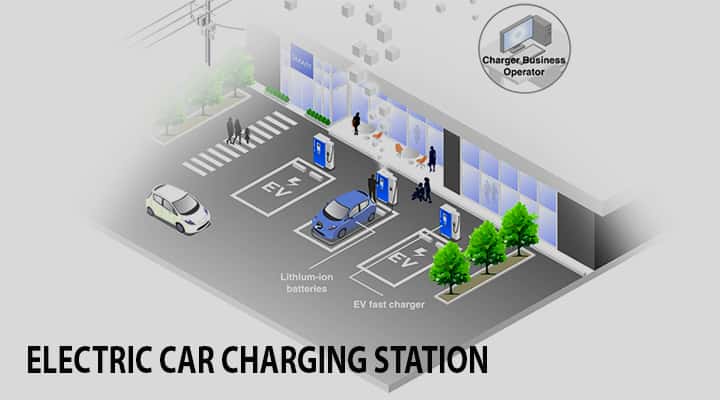
Many companies are operated these charging stations, like
- ChargePoint
- ABB
- BP
- Shell
- Hyundai
- Siemens
- Renault
- Schneider Electric
You can refer top-20 electric vehicle charging companies on the internet.
on the internet.
Advantages of Electric Vehicles
The environmental advantages
This is one of the major parts of interest of the electric vehicles. Rising pollution of fuel depletion resulted in rising interest in electric vehicles nowadays.
- These cars do not have any exhaust system, so there are no harmful gases taken out of electric cars. We know that normal gasoline-powered vehicles are major contributors to greenhouse gases.
- These cars are 100% eco-friendly because of no emissions.
Quiet in Operations
If you drove the electric vehicle you will definitely appreciate it for the less noise generation by the car. We all know how frustrating to hear the car sounds in crowded places or on busy streets.
- Electric vehicles due to the use of electric motors they almost generate no sound.
- Even the USA government suggested using sound generating devices to alert the pedestrians about the incoming vehicle.
Convenient and safe to drive
Electric cars are more convenient to recharge and use. You don’t need to go running to fuel stations. You can charge your vehicle even with a household electric supply.
These cars have a low center of gravity that makes EVs stable on the road. In case of an accident, the electric supply can be cut directly along with opening the airbag to avoid serious injuries to occupants.
Cost effective and low maintenance
If we go back a decade buying an electric car would be a big blow to your pocket. But now with all the new technologies and dropping prices of batteries, it’s possible to own an electric vehicle suitable for your pocket.
Also, there are tax incentives offered by the government in some countries that make it even better.
The electric vehicle operation depends on the electric motor. The lubrication like in the case of IC engine-powered vehicles is not necessary.
Easy and convenient driving experience
Electric cars have the simplest driving experiences compared to other vehicles.
- Most of the commercial electric cars only have one long gear.
- It also eliminates the use of clutch which most people can’t handle correctly.
You just need your foot on the accelerator pedal other one brake pedal and a hands-on steering wheel that’s it.
Battery life and mileage
As we have discussed earlier the Lithium-Ion batteries are used in electric vehicles. These can get charged quickly as well as can achieve about 200-400kms on a single charge.
Cost of Battery
The cost of batteries is going down with the new improvements. The batteries could last up to 10 years.
Disadvantages of Electric Vehicles
Costly initial investment
When you want to buy the electric vehicles, you have to pay pretty much hefty price. Normal persons couldn’t afford these vehicles as of now. Even the normal vehicles are prices at $30000-$40000.
For luxury, you will have to pay even more. The cost is expected to come down but as of now, you may be paying at least $10000 more for EVs.
Charging stations availability
When you want to go on vacation away from the city, charging stations problems might come up. The cities have the charging stations but if you more away they are rarely available.
These reasons are getting lesser as the electric vehicles are getting more popular.
Limited range and charging times
If you are deciding to go on a trip you might need to worry about the range of the EVs. They have 400-450km of range as of now. But with the non-availability of charging stations, this problem gets even worse.
Most electric cars take hours for charging the battery.
Electricity sources
The most abundant sources of electricity available right now are non-renewable sources of energy. It will be the same thing as that of IC engines if the source is from non-renewable sources.
This problem can be eliminated by the use of renewable energy sources.
Electric Vehicles 2020-21
There are many electric vehicles are in the market , as follows:
, as follows:
- Tesla S,
- Hyundai Kona,
- Hyundai Sonata,
- Hyundai Ioniq,
- Toyota Corolla,
- Toyota Camry,
- Chevy Bolt,
- Honda Insight,
- Honda Accord, etc.
High Rated Automotive Engineering Course
Automotive 101: A Beginners Guide To Automotive Repair
Automotive Engineering: Automobile Fundamentals and Advanced
Automotive Engineering; Hybrid Electric Vehicles
Do it Yourself – Automotive Electrical Diagnosis – Beginner
Do it Yourself-Automotive Electrical Diagnosis-Intermediate
Automotive Engineering; Common Rail Direct Injection(CRDI)
Fundamentals of Internal Combustion Engines – IC Engines
Hybrid and Electric Vehicle for Beginners FULL Course 2021
Automobile Safety: Understanding Car Crashes for beginners
Hybrid Vehicles The Fundamentals & Operating Principles
Conclusion
Wrapping up, electric vehicles are in the market for a long time. It’s just that they are gaining popularity as of now because of environmental benefits.
There is a lot to advance in the case of electric vehicles. But surely, if sources of electricity generation can be managed it will be a big step in saving the environment.
Further Study
Read more articles,
